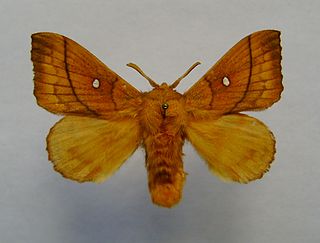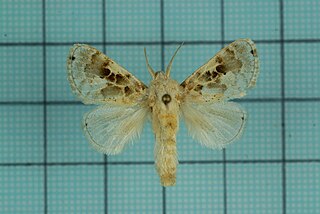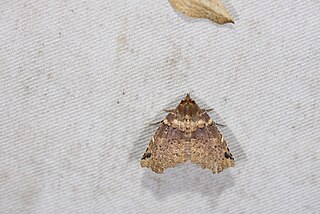
Attacus atlas, the Atlas moth, is a large saturniid moth endemic to the forests of Asia. The species was first described by Carl Linnaeus in his 1758 10th edition of Systema Naturae.

Eurema andersonii, the one-spot grass yellow or Anderson's grass yellow, is a small butterfly of the family Pieridae, that is, the yellows and whites, which is found in India and other parts of Asia.

Hypolycaena erylus, the common tit, is a small but striking butterfly found in India and South-East Asia that belongs to the lycaenids or blues family. The species was first described by Jean-Baptiste Godart in 1823.

Prevost's squirrel or Asian tri-colored squirrel is a colourful species of rodent in the family Sciuridae. It is found in forests in the Thai-Malay Peninsula, Sumatra, Borneo and nearby smaller islands, with an introduced population in northern Sulawesi. Although the Prevost's squirrel is declining is some regions because of habitat loss and hunting, the species is not considered threatened since it generally remains common and widespread. It can live in somewhat disturbed habitats and often visits plantations or gardens. It mostly feeds on plant material, especially fruits, but also takes insects.

Ugia is a genus of moths in the family Erebidae erected by Francis Walker in 1858.

Egnasia is a genus of moths of the family Erebidae. The genus was first described by Francis Walker in 1859.

Hadennia is a genus of moths of the family Erebidae. The genus was erected by Frederic Moore in 1885.

Odonestis is a genus of moths in the family Lasiocampidae described by Ernst Friedrich Germar in 1812. It consists of twenty-two species, which is found in Europe, Russia, Asia Minor, China and Japan.

Asthenini is a tribe of geometer moths under subfamily Larentiinae first described by Warren in 1893. The tribe has been combined with Eupitheciini in the past, most notably by Jeremy Daniel Holloway in his work The Moths of Borneo.

Meganoton analis, the grey double-bristled hawkmoth, is a moth of the family Sphingidae. It is known from India, Nepal, southern and eastern China, northern Thailand, northern Vietnam, Peninsular Malaysia, Indonesia, Taiwan, the southern part of the Russian Far East, South Korea and Japan.

Euthalia monina, the powdered baron or Malay baron, is a species of nymphalid butterfly. The species was first described by Frederic Moore in 1859.

Altha is a genus of moths of the family Limacodidae first described by Walker in 1862.
Dudgeonea leucosticta is a moth in the Dudgeoneidae family. It is found in India, Sri Lanka and Malaysia. Two subspecies are recognized. Nominate subspecies from Asia and D. l. sierraleonensis from Sierra Leone.
Odonestis ceylonica is a moth of the family Lasiocampidae first described by Tams in 1935. It is found in Sri Lanka and southern India.

Odonestis bheroba is a moth of the family Lasiocampidae first described by Frederic Moore in 1858.

Bamra albicola is a moth of the family Noctuidae first described by Francis Walker in 1858.

Falana sordida is a moth of the family Noctuidae first described by Frederic Moore in 1882.
Marapana pulverata is a moth of the family Noctuidae first described by Achille Guenée in 1852. It is found in India, Sri Lanka, Thailand, Myanmar, the Andaman islands, Peninsular Malaysia, Singapore, Borneo, Sulawesi, Seram and New Guinea.

Phalera grotei, or Grote's buff-tip, is a moth of the family Notodontidae. The species was first described by Frederic Moore in 1859. It is found in India, Sri Lanka, China, Thailand, Korea, Hong Kong, Vietnam, Indonesia to Sumatra and Borneo.
Altha adala is a moth of the family Limacodidae first described by Frederic Moore in 1859. It is found in Sri Lanka, India, Thailand, Myanmar, Vietnam, Java, Bali, Borneo, and Sumatra.
















